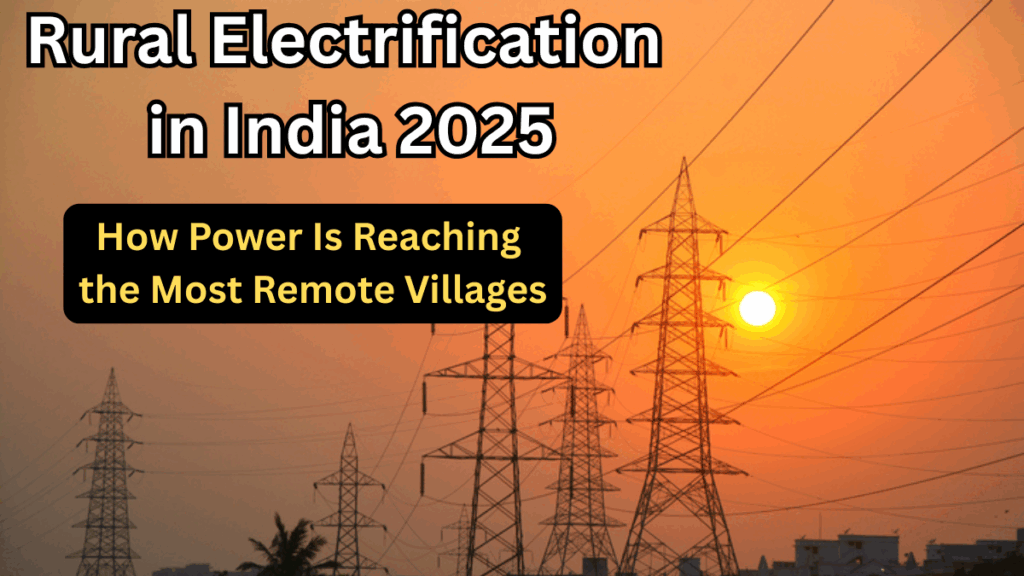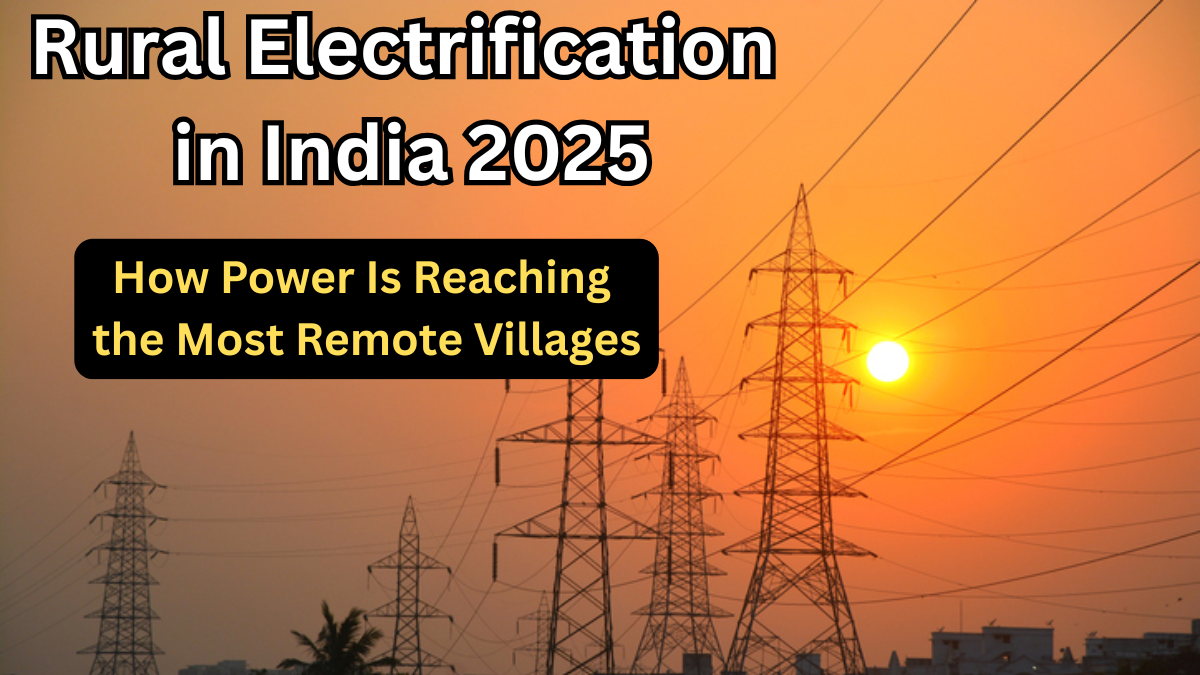Electricity is no longer a privilege—it’s a basic necessity. In 2025, Rural Electrification in India is transforming the way millions of people live, work, and study. The mission to bring power supply in remote areas is not just about lighting up homes; it’s about igniting opportunities for education, business, and healthcare.

Why Rural Electrification Matters
For decades, rural communities faced significant challenges due to limited or no access to electricity. These challenges affected:
-
Education – Students struggled to study after dark.
-
Healthcare – Clinics lacked reliable electricity for essential equipment.
-
Economic Growth – Small businesses were unable to scale due to inadequate power supply.
Today, Rural Electrification in India is changing this scenario, bridging the urban-rural gap and empowering communities.
Government Initiatives Driving the Change
The Indian government has launched several initiatives to strengthen power supply in remote areas:
-
Deen Dayal Upadhyaya Gram Jyoti Yojana (DDUGJY): Focused on rural electrification and separating agricultural and non-agricultural feeders.
-
Saubhagya Scheme: Ensured last-mile connectivity and electricity access for all households.
-
Revamped Distribution Sector Scheme (RDSS): Modernizing power distribution infrastructure.
These programs work in tandem with state-led projects and private sector collaborations, ensuring continuous improvement.
Progress So Far: A Snapshot
Here’s a quick look at how Rural Electrification in India has evolved over the years:
| Year | Villages Electrified | Households Connected | Key Milestone |
|---|---|---|---|
| 2018 | 597,464+ | 85% of rural homes | Nearly all villages electrified |
| 2022 | 100% | 96% of rural homes | Focus on household connections |
| 2025 | Ongoing | 100% target | Strengthening infrastructure and reliability |
Benefits of Electrifying Rural India
Electrification is more than just connecting wires—it transforms lives:
-
Improved Education: Children can study at night with reliable lighting.
-
Better Healthcare: Clinics can store vaccines and run medical devices efficiently.
-
Boost to Small Businesses: Entrepreneurs can operate machinery and expand their operations.
-
Digital Inclusion: Internet access becomes possible, opening doors to e-learning and online opportunities.
Challenges in Power Supply in Remote Areas
While progress is significant, challenges remain:
-
Difficult terrain in hilly and forested regions.
-
Dependence on diesel generators in inaccessible areas.
-
Maintenance issues due to poor infrastructure.
The government is addressing these through solar energy, microgrids, and improved distribution networks.
The Road Ahead for 2025 and Beyond
In 2025, the focus is shifting toward:
-
Sustainable Energy: Increasing use of solar and wind power in rural areas.
-
Smart Grids: For efficient power management.
-
Community Involvement: Training locals for maintenance and management.
FAQs
Q1. What is the main goal of rural electrification in India?
The primary goal is to provide reliable and affordable electricity to every rural household, improving living standards and economic opportunities.
Q2. How is the government ensuring power supply in remote areas?
Through schemes like DDUGJY, Saubhagya, and RDSS, along with solar and decentralized power projects.
Q3. Has every village in India been electrified?
Yes, all villages are electrified, but the focus is now on ensuring every household receives consistent and quality power.
Q4. What role does renewable energy play in rural electrification?
Renewables like solar energy are crucial for powering remote areas where grid connectivity is challenging.
Click here to learn more
